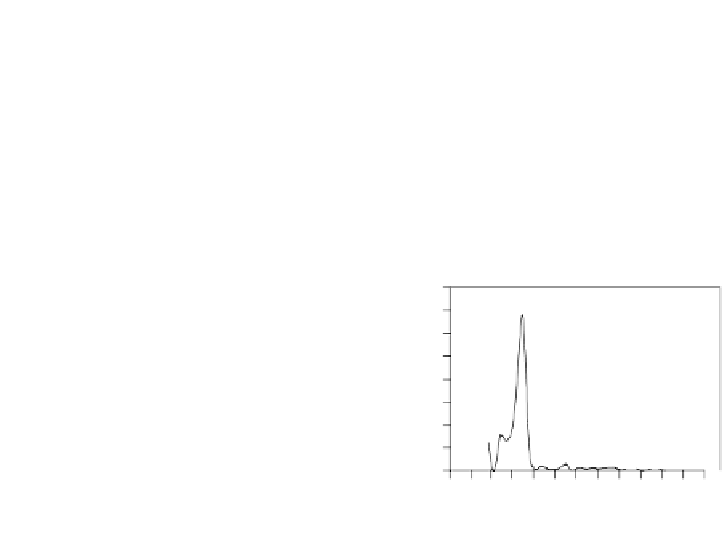Geoscience Reference
In-Depth Information
0.6
4
1988
1988
0.5
0.4
0.3
0.2
0.1
0.0
3
2
1
0
JFMAMJJASONDJ
JFMAMJ JASONDJ
Time (months)
Time (months)
A
C
8
0.4
0.3
0.2
0.1
0.0
8
1997
7
7
1997
6
6
5
5
4
4
3
3
M JJA SOND
2
2
1
1
0
0
JFMAMJJASONDJ
JFMAMJJASOND
Time (months)
Time (months)
B
D
FIGURE 9.3.14
Comparison of nutrient levels in the water column of the Mar Menor lagoon
in 1988, under oligotrophic conditions, and in 1997, after changes in agriculture in the sur-
rounding lands. (A) Nitrate concentration, 1988; (B) nitrate concentration, 1997; (C) phosphate
levels, 1988; (D) phosphate levels, 1997.
eutrophic, providing conditions for growth of larger phytoplankton cells and subsequent
changes in the trophic structure.
Planktonic communities are highly dependent on the nutrient status. As men-
tioned previously, the seasonal distribution of the main taxonomic groups in terms
of density in 1988 reveals that smaller flagellates (
Rhodomonas
and
Cryptomonas
)
were numerically the most important phytoplankters in winter, whereas in the period
from spring to fall diatoms reached their maximum values with dinoflagellates
appearing to be numerically more important in fall.
Although the seasonal pattern found in 1997 in the smaller phytoplankton frac-
tions was relatively similar to the one found in 1988 there were differences in the
large-sized phytoplankton cells compartment. Large diatoms such as
Coscinodiscus
spp. and
Asterionella
spp. were present throughout the year. These changes in cell
size are in accordance with the ecophysiological theory based on the size-dependent
nutrient uptake kinetics
48,49
and diffusion limitation of nutrient transport.
50,51
Similar-
ities in the smaller phytoplankton fractions suggest that both the detritus pathway
52,53
and the microbial loop,
54
characteristic of shallow oligotrophic systems, still play an
important role in transferring energy to larger organisms.


















































Search WWH ::

Custom Search